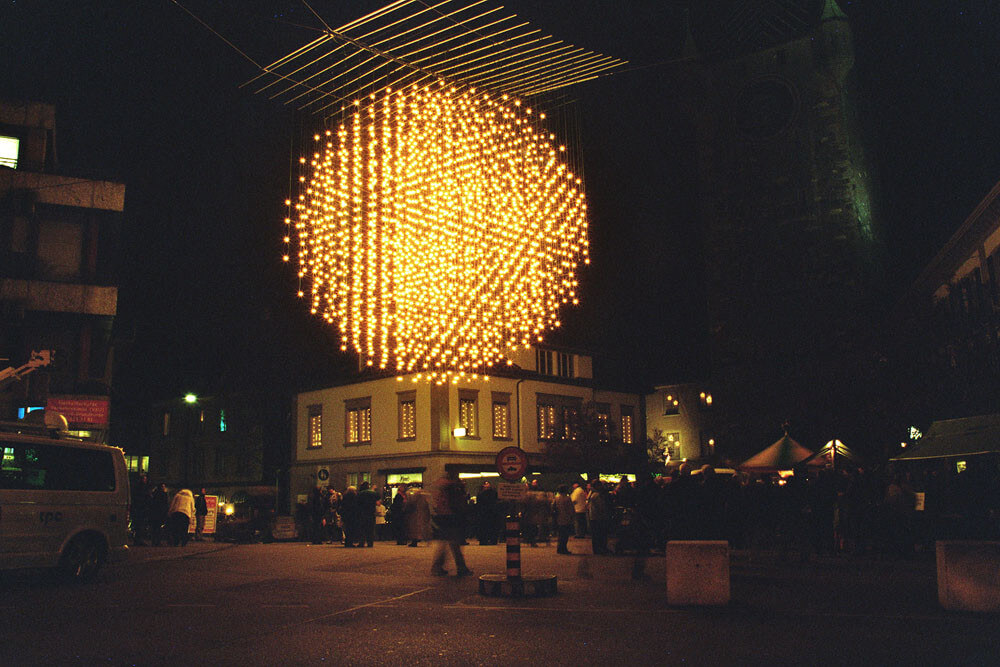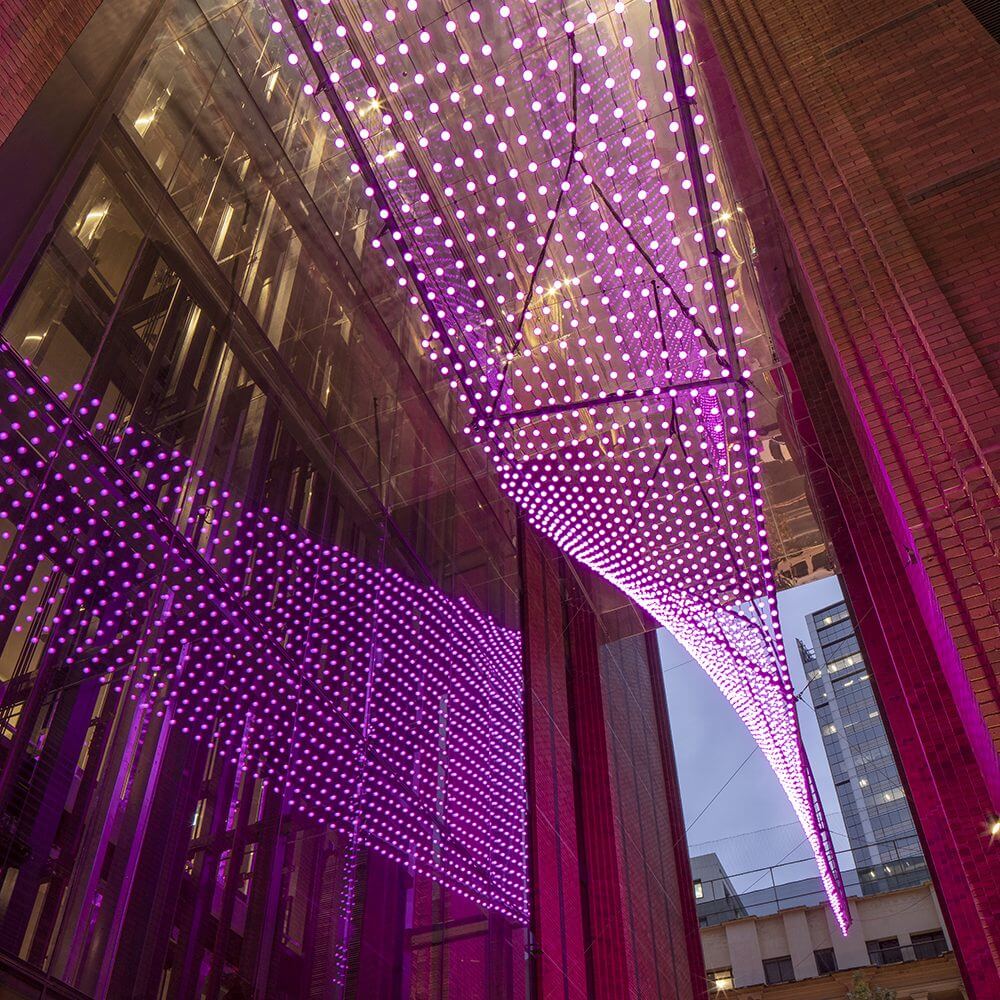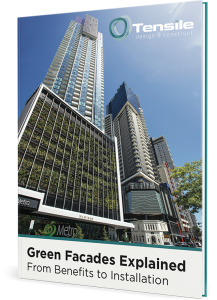Catenary lighting involves attaching luminaires to overhead wire-rope cables in outdoor public spaces, rather than mounting them on large poles or posts.
As well as improving safety and security for night-time use of a space, installing catenary lighting can provide a range of benefits.
Let’s take a look at these, and the key things to consider when designing and installing catenary lighting.
Benefits of catenary lighting
These include:
- Space maximisation – the cables can be attached to building walls or purpose-built structures, avoiding the intrusion of bulky poles into a space.
- Moveability – catenary lighting allows for temporary installations that can be dismantled and moved to another site as needed. This is great for events, or for seasonal installations such as these Christmas lights in Germany.
- Suitable for large or small spaces – wire cable can be designed to stretch a long way, as in Henley Square SA where the wires span up to 30m without interim supports. It can also be configured for very tight spaces, as in the case of the ’Reflect’ light sculpture installed in the Arc by Crown atrium.
- Design freedom and aesthetics – there are various design options for cable configurations and for lighting style and mood (for example, playful, colourful, subtle, or festive). In addition, the near transparency of stainless-steel wire rope can allow for the creation of a seemingly effortless floating appearance in an installation.

Factors to consider when installing catenary lighting
To get the most out of your catenary lighting installation, you need to ensure the following considerations are addressed.
1. Installation purpose
You need to think about what you hope to achieve through your catenary lighting installation. For example, is your aim to improve security and safety, encourage night-time use of the space, create ambience, decorate the space, or all the above?
Clearly determining this upfront gives you a starting point for the rest of the project, in terms of lighting style, features, cable configuration and connection points.
2. Site conditions and precision engineering
Your catenary light installation needs to suit the specific site conditions in terms of power connections, anchor points and size of the space. That said, stainless steel wire rope is remarkably flexible and adaptable to a wide range of spaces and conditions.
All support mechanisms also need to be precisely engineered to not only carry the loads required but to prevent excess sag and allow for the effect of wind. Some of the critical factors here include elevation, local climate, spans required, size of cables, anchor points, weight and placement of luminaires, and any additional load requirements.
3. Ongoing maintenance
Considerations here include access for cleaning or replacement of lights and general ongoing maintenance tasks. You may also want to consider whether you might want to change lighting themes in the future – such as during seasonal celebrations. In any case all these considerations should be factored in at the design stage.
Bringing your idea to life
Installing catenary lighting is one of our specialties at Tensile. If you have a project in mind, get in touch to find out how we could help you bring your idea to life.






































